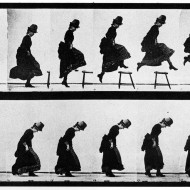
Martha Graham claimed that “movements never lie.” I’d like to believe this. However, contemporary research shows that bodily actions can be used purposefully to mislead the observer.
Thus human movement is both genuine and artificial. If one wishes to understand the nonverbal dimensions of an individual’s behavior, it becomes necessary to distinguish between authentic expressions and actions that are meant to create a certain impression.
Warren Lamb grappled with this problem. As a business consultant, he was often asked to make hiring recommendations among short-listed candidates.… Read More









